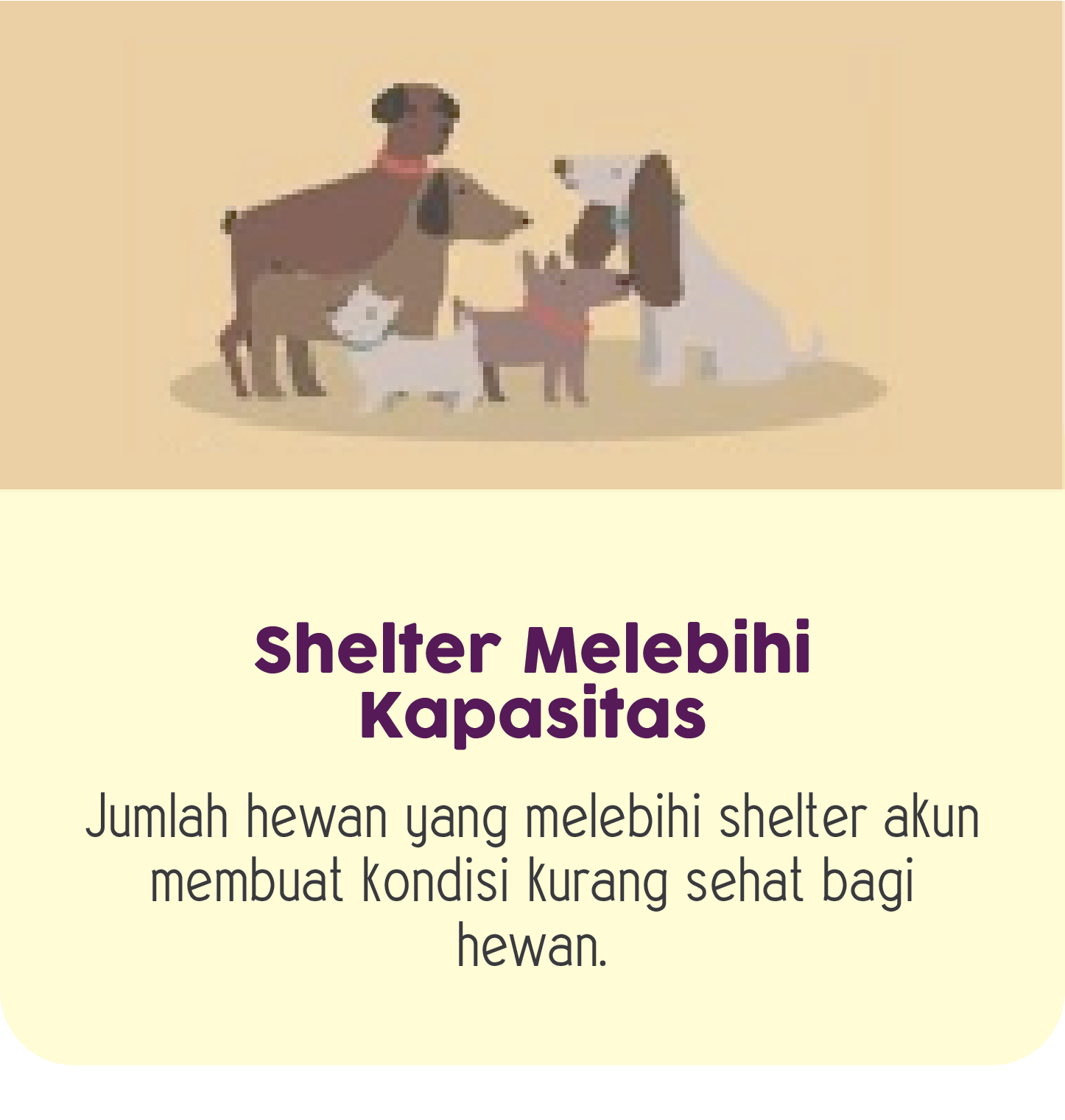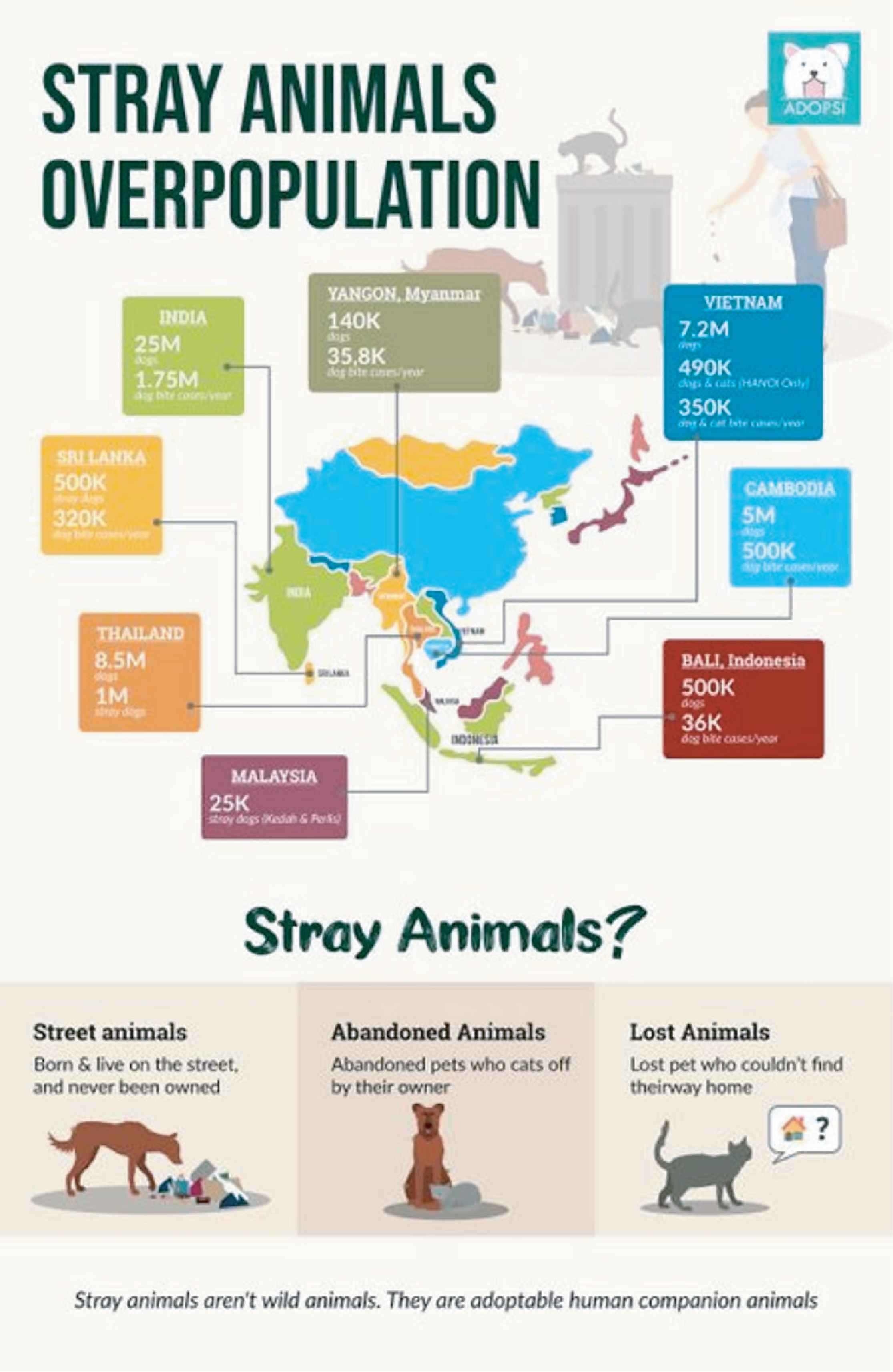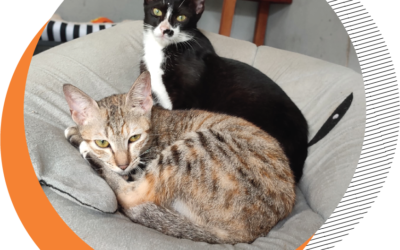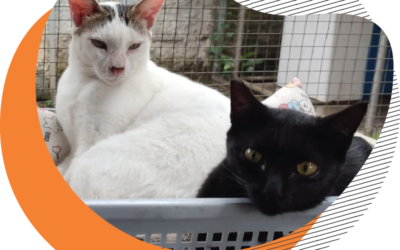CONSEQUENCES FROM OVERPOPULATION OF STRAY ANIMALS
Content By : Angelous Bobby Fernando, Founder Adopsi App





*This information powered by ADOPSI APP

Related Post
Canine Body Language
Canine Body Language. While your dog cannot speak as you do, she does relay her feelings and emotions through a series of body postures, gestures and vocalizations. Her body language can be subtle and wide-ranging, but with a little practice you can learn and understand it. Your dog will use her ears, eyes, ears, mouth, tail and general body movement/postures to communicate to you. She may also use vocalizations.
Healthy Cats = Proper Diet
Healthy Cats =Proper Diet
Fresh, clean drinking water is a constant
requirement for cats. For cats to maintain their health and fitness, they require a balanced diet that includes foods that are exclusively found in meat-based products. Considering that cats are real carnivores (Karnivora Obligat).
Why Dogs Bark
Dogs utilise their voice (barking) and body
language (wagging their tail, for example) to
communicate with humans, other dogs, and other
animals when they can’t speak. For dogs, barking
is a typical behaviour. The majority of normal,
healthy dogs bark. Has your dog’s barking ever caught your attention? Is it high pitched at times, or is it frequent?
Things you need to know about your cat’s natural behavior
Cat’s natural behavior is related to age, personality and past experience. Cats really love to play, both with their humans or toys. Playing and moving around is really important for their physical and mental health. Although they sleep most of the day, they still need to move around and play.
Pets as property in Animal Welfare
Pets as propertyin Animal WelfareCitayam Fashion Week in Jakarta is now booming and attracts people’s attention, especially those with a passion for the modeling world. This weekly event shows street fashion a la Harajuku in Japan which attracts people both locally...
Feline Behavior Guidelines
The benefits of living with a pet are now well
recognized. By preventing and treating
behavioral problems, we have the opportunity to
protect and strengthen the
human-pet-veterinary bond and increase the
quality of life for both pets and pet lovers. The
goals of the American Association of Feline
Practitioners (AAFP) Feline Behavior
Guidelines are to support veterinarians and Cat
Lovers by providing practical information and
client educational materials to
successfully incorporate feline behavioral
medicine into every practice that offers feline
healthcare





